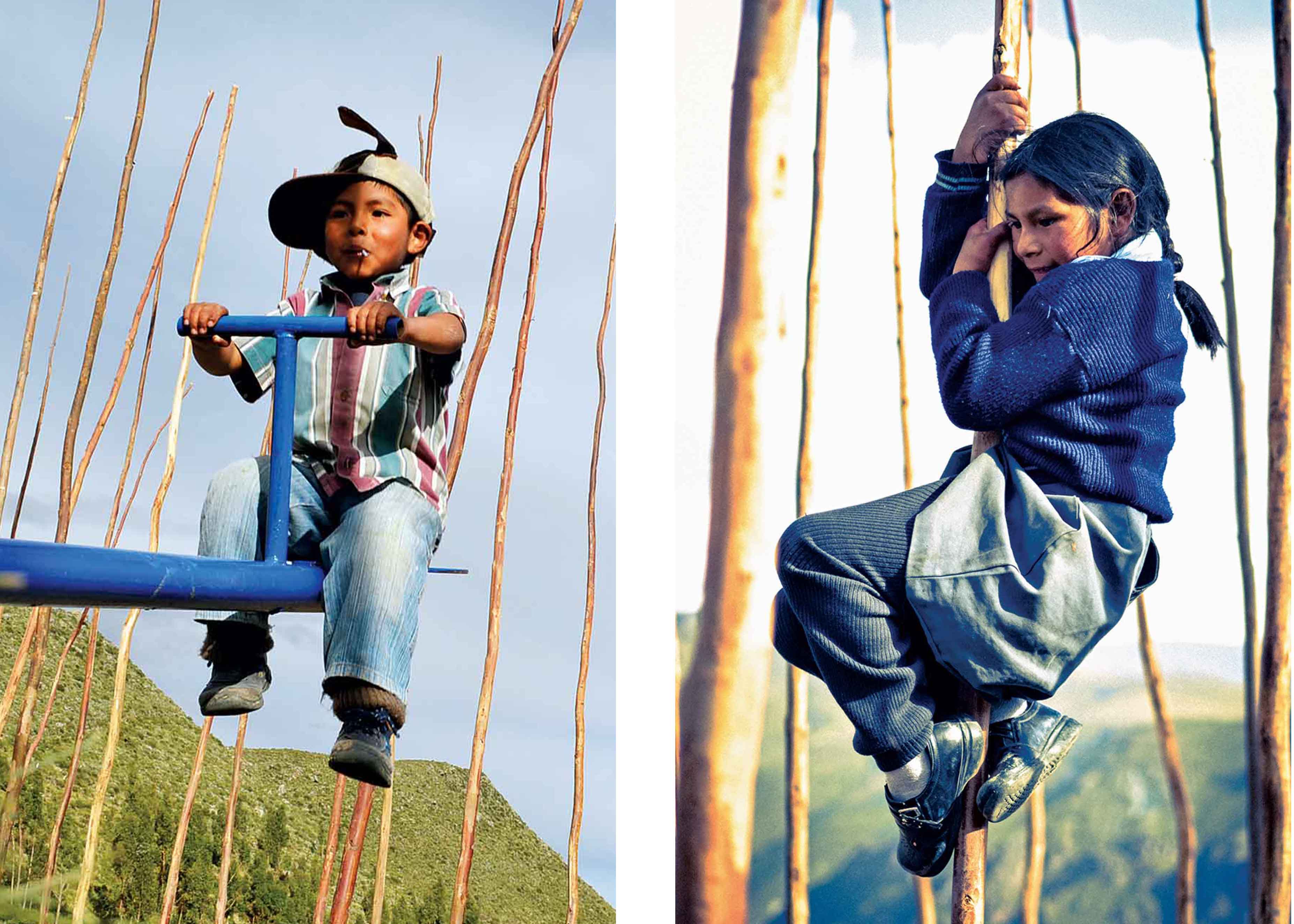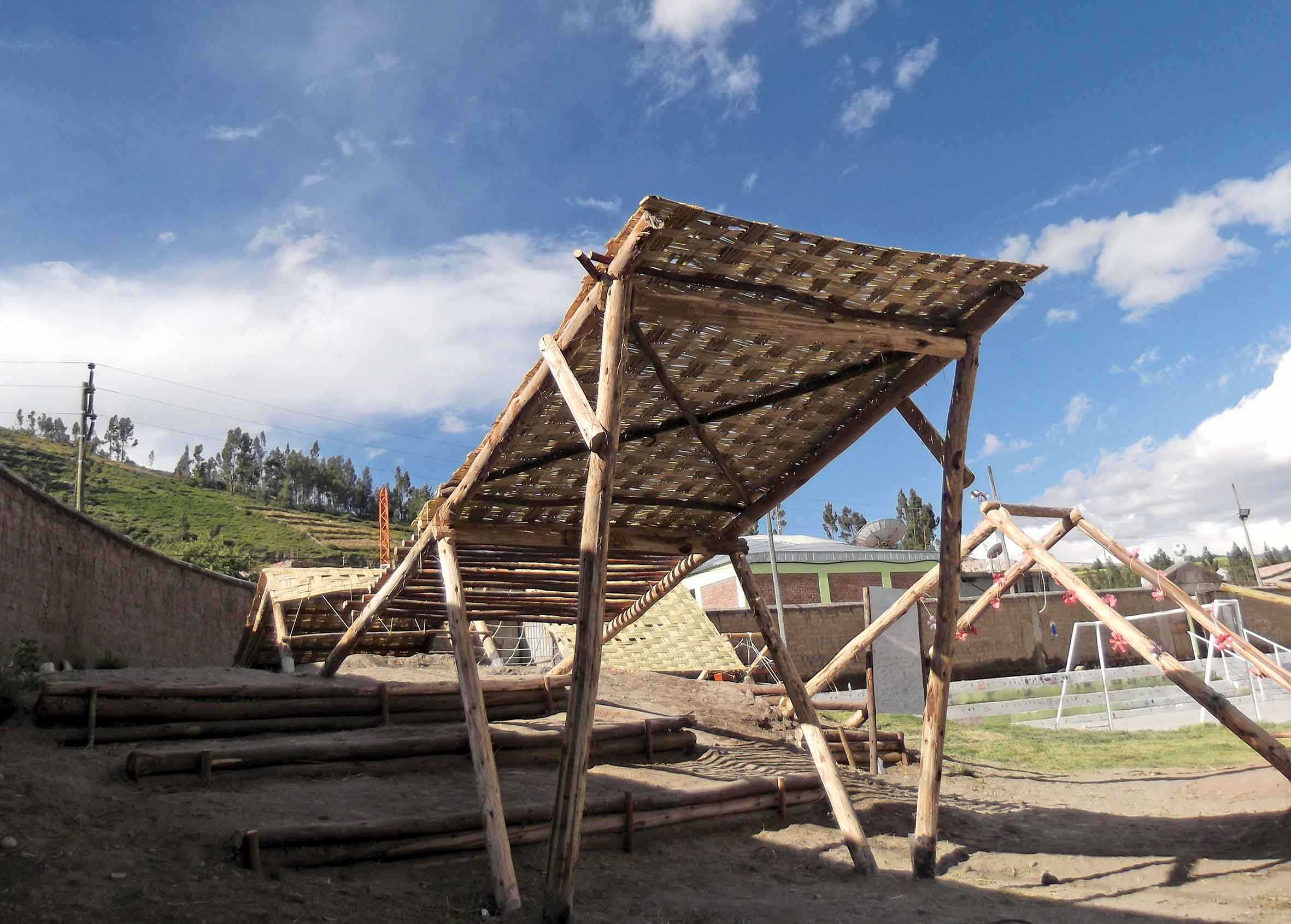WAWA PUKLLAY: Social Project for Children’s Recreational Equipment
The Colca Valley is located in the Andes on the north-eastern side of Arequipa, Peru.
In this place, we can find the Colca River and the Colca Canyon, so it has interesting natural landscapes and is known for its wildlife: condors, llamas, alpacas, guanacos, vicunas, and vizcachas.
The children of this valley do not have access to the adequate and safe equipment to play and develop their skills widely.
In response to this need, in 2013, the Latin American Coordinator of Architecture Students (CLEA) 1 developed an initiative called WAWA Pukllay (“Children playing” in Quechua) to create recreational spaces through the Latin American Social Workshop (TSL) 2.

This article describes the intervention in the Coporaque Village.

Photography: Lara Placido. 2013
COPOPARQUE
By: AGA estudio (Venezuela), Maximillian Nowotka (Venezuela), Lara Placido (Portugal), Enrique Villacis (Ecuador), Rocio Cayllahua (Perú) y Cesar Acurio (Perú), Estudiantes del Taller Coporaque – T.S.L 2103.

Photography: Orlando Vásquez. 2013
The following diagrams illustrate the intervention process. Starting from the original situation until the final stage: surface-object activation.

Diagrams: AGA estudio
STRATEGIES THE SPACE ACTIVATION
-
- Avoid a rigid regulatory plan for the proposal, but rather identify and incorporate opportunities that would allow manifesting the local culture of the community that lives in the Village of Coporaque.
- Work the object-surface relation through spatial materiality (soil and grass), local building materials and technologies (chaclas and logs) and the recovery of existing artifacts (slide and seesaw) which already result familiar for the children who occasionally make use of the place.

Photography: Enrique Villacis. 2013
Photography: Carlos Pérez. 2013
Based on the described ideas, a play area was developed, a playground-landscape as a sort of “penetrable forest” without predisposed readings for its exploration.
Chaclas or masts of more than six meters high arranged throughout the site, along with a topography of elevations and depressions, create a place that manages to link the past scenario with the new one, where children can explore, experiment and make this space their own.
The project delivers a natural-artificial landscape open and accessible for the distension of an entire isolated population with very few resources but with a strong conviction that the transformation of this space will generate a significant contribution to the collective relations of the inhabitants of the Coporaque community in the Colca Valley.

Photography: Iván Juárez
Full article in our 03 printed edition.
REFERENCES
1 Latin American Coordination of Students of Architecture, a non-profit organization composed of architecture students from 16 countries in Latin America, for further information visit www.clealatinoamerica.com
2 The TSL (Latin American Social Workshop) gathers, year after year, as much Latin American architecture students to address various problems, such as planning, design, landscaping, among others; in different cities of Latin America, in order to form architects committed to their culture and the social aspect of their work.
3 From the Quechua word cákra. Small field for growing vegetables.








